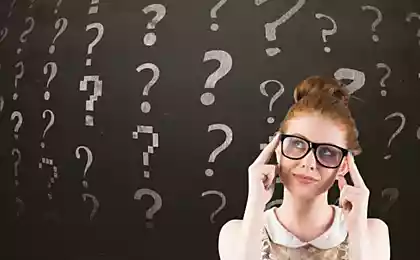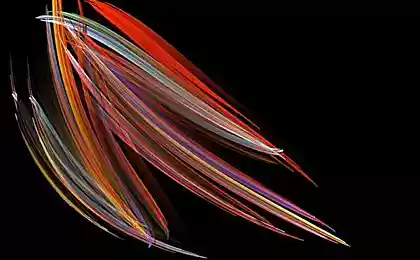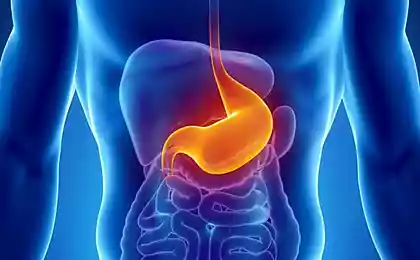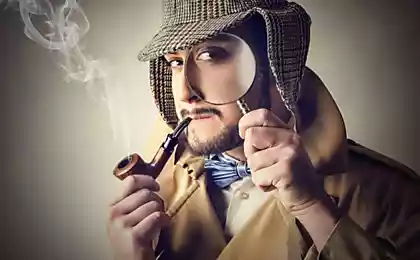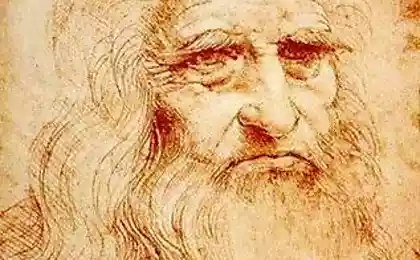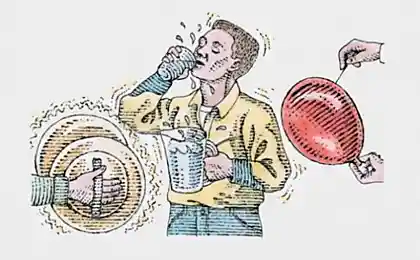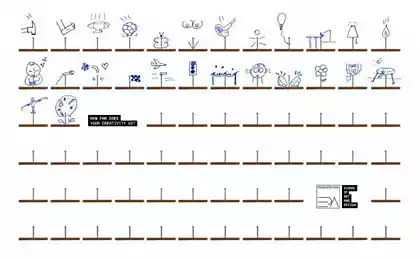845
Mysteries of the vagus microworld (9 photos)
National Geographic Magazine published a unique pictures medium, which is called plankton ... Actually the smallest part of it, which is measured in microns - nannoplankton ... These microscopic animals and plants inhabit the entire water column up to a maximum depth are the main inhabitants of our planet ... This is probably why, they should know in the face ...
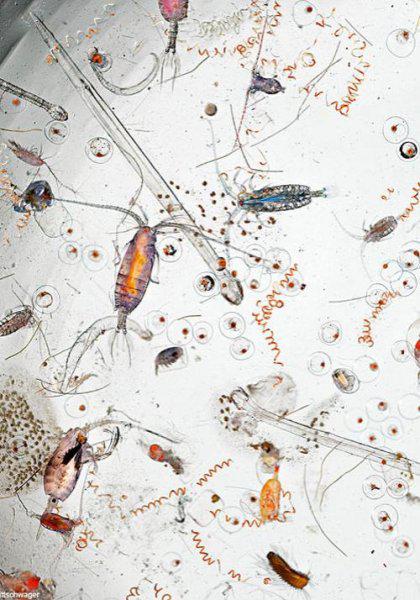
If you look at them without a microscope, you will see a drop of water ... Fancy zoo appears only at a magnification of 25 times ...
Plankton make many bacteria, algae, protozoa, coelenterates, molluscs, crustaceans, tunicates, eggs and fish larvae, the larvae of many invertebrate animals ... In this picture you can see well the residents of the deep sea ...

Under the first number stands ... crab larvae. Less than a quarter of an inch long, this thin, transparent arthropod goes a long way of maturation before reaching maturity, but still part of the body is already discernible and recognizable - a tiny mite, shell, large eyes ...
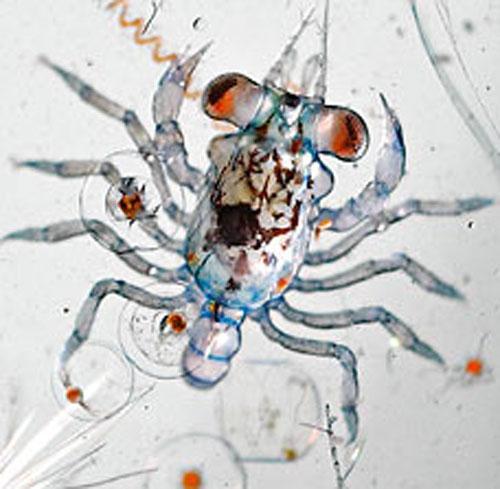
One of the most primitive on earth life on Earth is represented by cyanobacteria (Cyanobacteria) ... These helical strands at No. 2 first developed a way to use the energy of sunlight to produce sugar - a process called photosynthesis, which releases oxygen into the atmosphere ... Billions of cyanobacteria in the oceans toil to produce for you the next portion of the oxygen ...
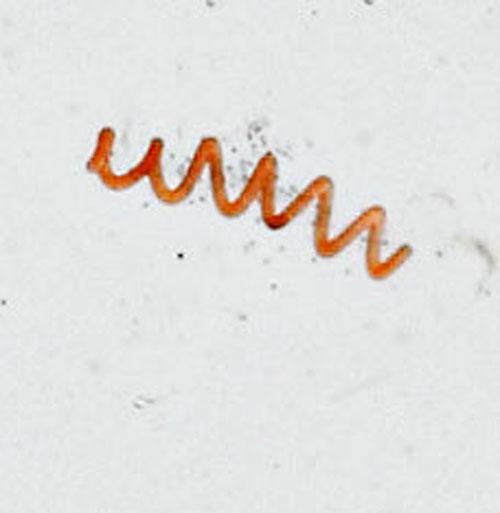
At number 3 are the diatoms - these small, square-celled organisms ... When they die, they are similar to quartz shell forms the rocks on the bottom of the sea ...
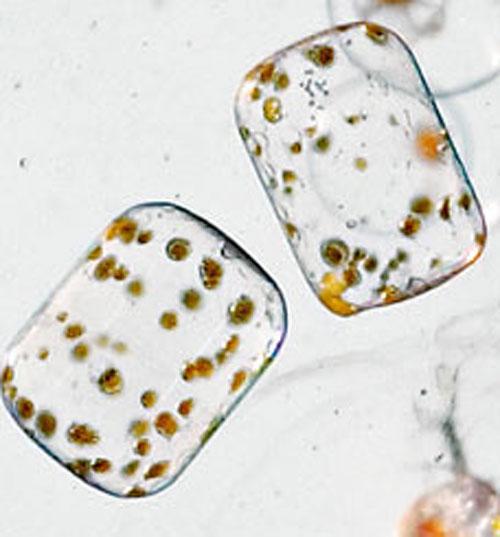
Number 4 - Copepods - the largest part of the plankton - the tiny, shrimp-like crustaceans that are teardrop-shaped with large antennas. Copepods - energetic swimmers, have well-developed nervous system ... However, they are - the staple food of countless species of fish ...
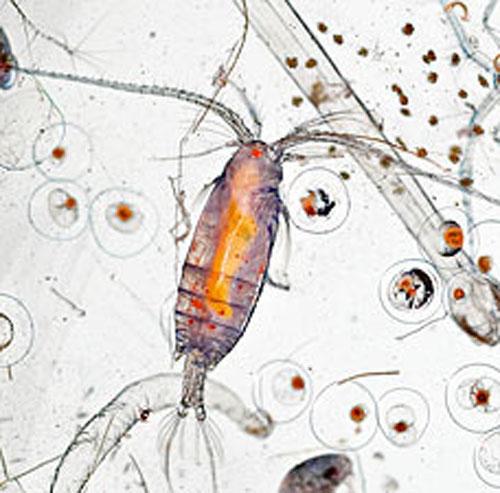
... Just five worms - long, transparent organisms are predatory sea animals ... They have a nervous system, two eyes, mouth, predatory teeth, they seize prey ... Some of them may even enter his victim paralytic poison ...
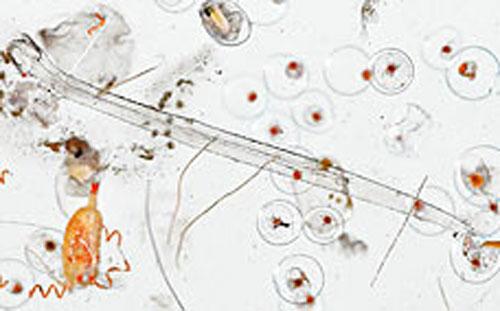
Six fish larvae ... ... Almost all the fish lay eggs, though a few - including sharks - viviparous ... But most of the fish species produced a huge number of fertilized eggs in the open sea, a large percentage of which will be eaten ....
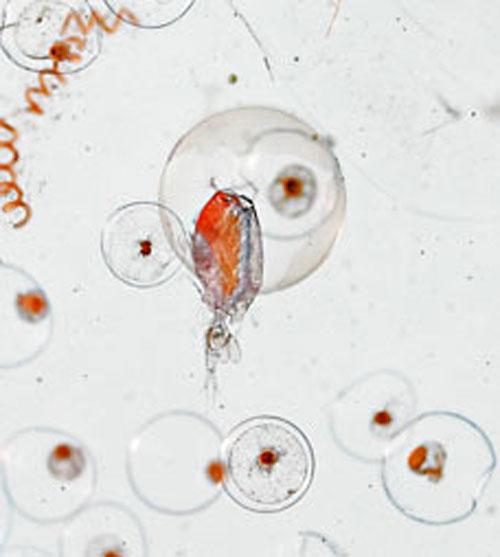
Finally, a representative of number 7 - sea worm ... Equipped with a multitude of tiny, hair-like legs, which he helps himself to move in the water ...
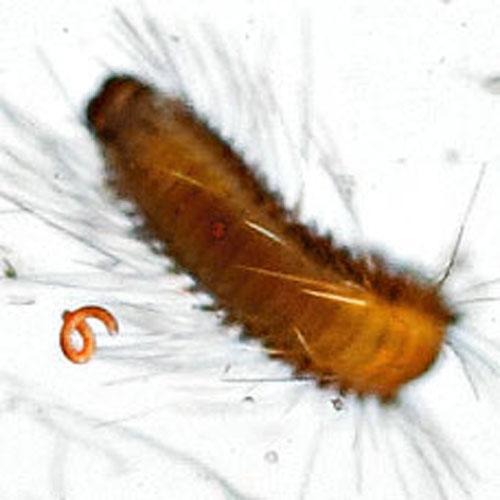

If you look at them without a microscope, you will see a drop of water ... Fancy zoo appears only at a magnification of 25 times ...
Plankton make many bacteria, algae, protozoa, coelenterates, molluscs, crustaceans, tunicates, eggs and fish larvae, the larvae of many invertebrate animals ... In this picture you can see well the residents of the deep sea ...

Under the first number stands ... crab larvae. Less than a quarter of an inch long, this thin, transparent arthropod goes a long way of maturation before reaching maturity, but still part of the body is already discernible and recognizable - a tiny mite, shell, large eyes ...

One of the most primitive on earth life on Earth is represented by cyanobacteria (Cyanobacteria) ... These helical strands at No. 2 first developed a way to use the energy of sunlight to produce sugar - a process called photosynthesis, which releases oxygen into the atmosphere ... Billions of cyanobacteria in the oceans toil to produce for you the next portion of the oxygen ...

At number 3 are the diatoms - these small, square-celled organisms ... When they die, they are similar to quartz shell forms the rocks on the bottom of the sea ...

Number 4 - Copepods - the largest part of the plankton - the tiny, shrimp-like crustaceans that are teardrop-shaped with large antennas. Copepods - energetic swimmers, have well-developed nervous system ... However, they are - the staple food of countless species of fish ...

... Just five worms - long, transparent organisms are predatory sea animals ... They have a nervous system, two eyes, mouth, predatory teeth, they seize prey ... Some of them may even enter his victim paralytic poison ...

Six fish larvae ... ... Almost all the fish lay eggs, though a few - including sharks - viviparous ... But most of the fish species produced a huge number of fertilized eggs in the open sea, a large percentage of which will be eaten ....

Finally, a representative of number 7 - sea worm ... Equipped with a multitude of tiny, hair-like legs, which he helps himself to move in the water ...

